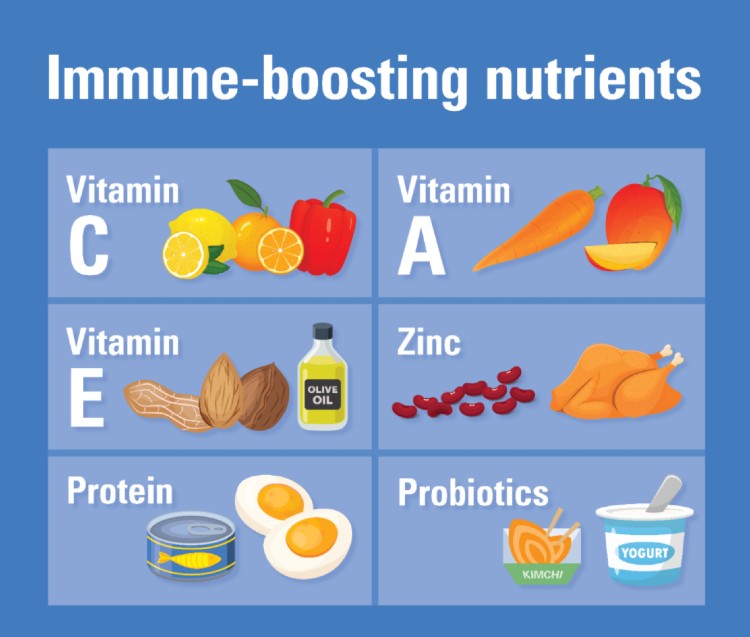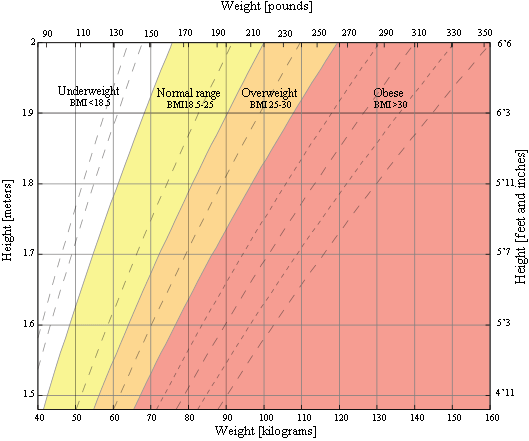The Best Fluffy Pancakes recipe you will fall in love with. Full of tips and tricks to help you make the best pancakes.

Body Mass Index (BMI) Calculator – Men and Women’s bmi Calculator
How to calculate Body Mass Index
Body Mass Index is a simple calculation using a person’s height and weight. The formula is BMI = kg/m2 where kg is a person’s weight in kilograms and m2 is their height in metres squared.
A BMI of 25.0 or more is overweight, while the healthy range is 18.5 to 24.9. BMI applies to most adults 18-65 years.
Who shouldn’t use a BMI calculator
BMI is not used for muscle builders, long distance athletes, pregnant women, the elderly or young children.
This is because BMI does not take into account whether the weight is carried as muscle or fat, just the number. Those with a higher muscle mass, such as athletes, may have a high BMI but not be at greater health risk.
Those with a lower muscle mass, such as children who have not completed their growth or the elderly who may be losing some muscle mass may have a lower BMI.
During pregnancy and lactation, a woman’s body composition changes, so using BMI is not appropriate. BMI calculator for men as well bmi calculator for women is shown below.
BMI Calculator: Calculate your Body Mass Index
The Body Mass Index (BMI) Calculator can be used to calculate BMI value and corresponding weight status while taking age into consideration. Use the “Metric Units” tab for the International System of Units or the “Other Units” tab to convert units into either US or metric units. Note that the calculator also computes the Ponderal Index in addition to BMI, both of which are discussed below in detail.
BMI introduction
BMI is a measurement of a person’s leanness or corpulence based on their height and weight, and is intended to quantify tissue mass.
Female bmi calculator It is widely used as a general indicator of whether a person has a healthy body weight for their height. Specifically, the value obtained from the calculation of BMI is used to categorize whether a person is underweight, normal weight, overweight, or obese depending on what range the value falls between.
These ranges of BMI vary based on factors such as region and age, and are sometimes further divided into subcategories such as severely underweight or very severely obese.
Bmi chart for males – being overweight or underweight can have significant health effects, so while BMI is an imperfect measure of healthy body weight, it is a useful indicator of whether any additional testing or action is required.
Women’s bmi calculator Refer to the table below to see the different categories based on BMI that are used by the calculator.
BMI table for adults
This is the World Health Organization’s (WHO) recommended body weight based on BMI values for adults. It is used for both men and women, age 18 or older.
| Category | BMI range – kg/m2 |
| Severe Thinness | < 16 |
| Moderate Thinness | 16 – 17 |
| Mild Thinness | 17 – 18.5 |
| Normal | 18.5 – 25 |
| Overweight | 25 – 30 |
| Obese Class I | 30 – 35 |
| Obese Class II | 35 – 40 |
| Obese Class III | > 40 |
BMI chart for adults
This is a graph of BMI categories based on the World Health Organization data. The dashed lines represent subdivisions within a major categorization.

BMI table for children and teens, age 2-20
The Centers for Disease Control and Prevention (CDC) recommends BMI categorization for children and teens between age 2 and 20.
| Category | Percentile Range |
| Underweight | <5% |
| Healthy weight | 5% – 85% |
| At risk of overweight | 85% – 95% |
| Overweight | >95% |
BMI chart for children and teens, age 2-20
The Centers for Disease Control and Prevention (CDC) BMI-for-age percentiles growth charts.
Chart for boys
Chart for girls
Risks associated with being overweight
Being overweight increases the risk of a number of serious diseases and health conditions. Below is a list of said risks, according to the Centers for Disease Control and Prevention (CDC):
- High blood pressure
- Prostate health care
- Higher levels of LDL cholesterol, which is widely considered “bad cholesterol,” lower levels of HDL cholesterol, considered to be good cholesterol in moderation, and high levels of triglycerides
- Type II diabetes
- Coronary heart disease
- Stroke
- Gallbladder disease
- Improve Brain Function
- Osteoarthritis, a type of joint disease caused by breakdown of joint cartilage
- Sleep apnea and breathing problems
- Erectile Dysfunction ED
- Certain cancers (endometrial, breast, colon, kidney, gallbladder, liver)
- Low quality of life
- Neuropathy Nerve Pain!
- Mental illnesses such as clinical depression, anxiety, and others
- Body pains and difficulty with certain physical functions
- Tinnitus hearing issue
- Generally, an increased risk of mortality compared to those with a healthy BMI
- Chronic Pain & Anxiety
As can be seen from the list above, there are numerous negative, in some cases fatal, outcomes that may result from being overweight. Generally, a person should try to maintain a BMI below 25 kg/m2, but ideally should consult their doctor to determine whether or not they need to make any changes to their lifestyle in order to be healthier.
Risks associated with being underweight
Being underweight has its own associated risks, listed below:
- Malnutrition, vitamin deficiencies, anemia (lowered ability to carry blood vessels)
- Osteoporosis, a disease that causes bone weakness, increasing the risk of breaking a bone
- A decrease in immune function
- Growth and development issues, particularly in children and teenagers
- Possible reproductive issues for women due to hormonal imbalances that can disrupt the menstrual cycle. Underweight women also have a higher chance of miscarriage in the first trimester
- Potential complications as a result of surgery
- Generally, an increased risk of mortality compared to those with a healthy BMI
In some cases, being underweight can be a sign of some underlying condition or disease such as anorexia nervosa, which has its own risks. Consult your doctor if you think you or someone you know is underweight, particularly if the reason for being underweight does not seem obvious.
Limitations of BMI
Although BMI is a widely used and useful indicator of healthy body weight, it does have its limitations. BMI is only an estimate that cannot take body composition into account. Due to a wide variety of body types as well as distribution of muscle, bone mass, and fat, BMI should be considered along with other measurements rather than being used as the sole method for determining a person’s healthy body weight.
In adults:
BMI cannot be fully accurate because it is a measure of excess body weight, rather than excess body fat. BMI is further influenced by factors such as age, sex, ethnicity, muscle mass, and body fat, and activity level, among others. For example, an older person who is considered a healthy weight, but is completely inactive in their daily life may have significant amounts of excess body fat even though they are not heavy. This would be considered unhealthy, while a younger person with higher muscle composition of the same BMI would be considered healthy. In athletes, particularly bodybuilders who would be considered overweight due to muscle being heavier than fat, it is entirely possible that they are actually at a healthy weight for their body composition. Generally, according to the CDC:
- Older adults tend to have more body fat than younger adults with the same BMI.
- Women tend to have more body fat than men for an equivalent BMI.
- Muscular individuals and highly trained athletes may have higher BMIs due to large muscle mass.
In children and adolescents:
The same factors that limit the efficacy of BMI for adults can also apply to children and adolescents. Additionally, height and level of sexual maturation can influence BMI and body fat among children. BMI is a better indicator of excess body fat for obese children than it is for overweight children, whose BMI could be a result of increased levels of either fat or fat-free mass (all body components except for fat, which includes water, organs, muscle, etc.). In thin children, the difference in BMI can also be due to fat-free mass.
That being said, BMI is fairly indicative of body fat for 90-95% of the population, and can effectively be used along with other measures to help determine an individual’s healthy body weight.
BMI formula
Below are the equations used for calculating BMI in the International System of Units (SI) and the US customary system (USC) using a 5’10”, 160-pound individual as an example:
|
USC Units:
SI, Metric Units:
|
|||||||||||||||||||||||||||||||||
Ponderal Index
The Ponderal Index (PI) is similar to BMI in that it measures the leanness or corpulence of a person based on their height and weight. The main difference between the PI and BMI is the cubing rather than squaring of the height in the formula (provided below). While BMI can be a useful tool when considering large populations, it is not reliable for determining leanness or corpulence in individuals. Although the PI suffers from similar considerations, the PI is more reliable for use with very tall or short individuals, while BMI tends to record uncharacteristically high or low body fat levels for those on the extreme ends of the height and weight spectrum. Below is the equation for computing the PI of an individual using USC, again using a 5’10”, 160-pound individual as an example:
|
USC Units:
SI, Metric Units:
|
- Dragons Den Weight Loss Gummies UK Reviews – #1 Dragons Den Weight Loss Gummies, Ingredients, Price and Where to Buy -
- Dragons Den UK Weight Loss Pill Reviews Holly Willoughby Weight Loss – UK #1 Slimming Capsule? -
- Weight Loss Pills Dragons Den UK – How Older Women Lose Weight with UK #1 Weight Loss Capsules Safely, Quickly & Effectively -
















